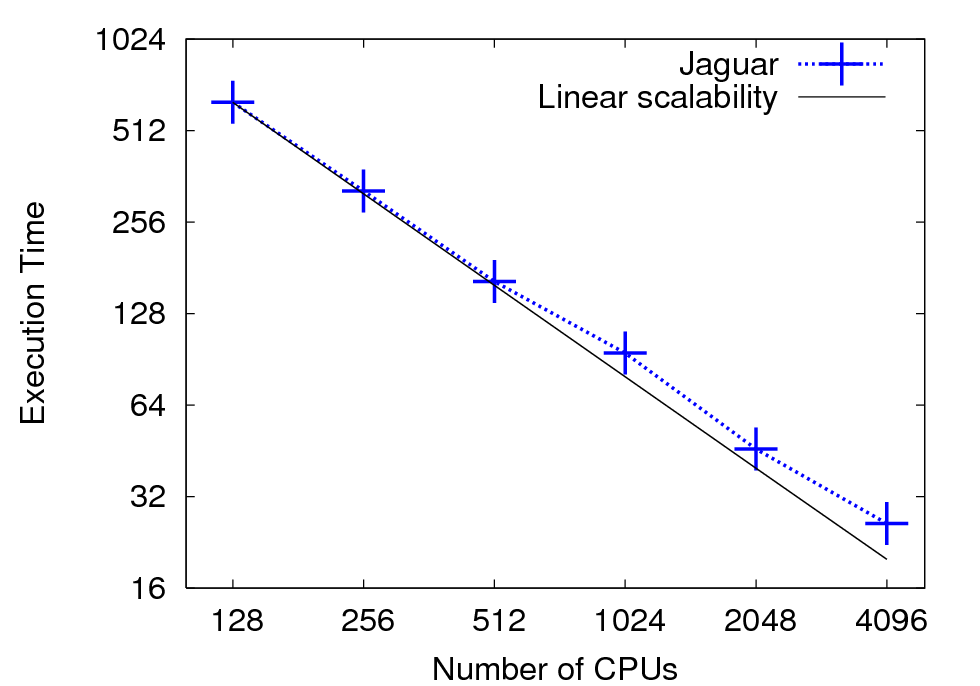| Panel | ||||||||||||
|---|---|---|---|---|---|---|---|---|---|---|---|---|
| ||||||||||||
|
Introduction
...
| Wiki Markup |
|---|
{center:class=myclass}
{latex}
\begin{eqnarray*}
\nabla \times \left(\frac{1}{\mu} \nabla \times \vec{\mathbf E}\right) - k^2 \epsilon \vec{\mathbf E} & = 0 & on \quad \Omega \\
\vec{\mathbf n} \times \vec{\mathbf E} & = 0 & on \quad \Gamma_{E} \\
\vec{\mathbf n} \times \left( \frac{1}{\mu} \nabla \times \vec{\mathbf E} \right) & = 0 & on \quad \Gamma_{M} \\
\end{eqnarray*}
{latex}
{center} |
We use NeelecNedelec-type vector basis functions to discretize the electric field:
...
| Wiki Markup |
|---|
{center:class=myclass}
{latex}
\[
{\mathbf Kx} + i \sum_j \sqrt{k^2-k^2_{cj}} {\mathbf W}_j {\mathbf x} = k^2 {\mathbf Mx}
\]
{latex}
{center} |
...
| Wiki Markup |
|---|
{center:class=myclass}
{latex}
\[
{\mathbf Kx} + i \sum_{m,n} \sqrt{k^2-(k^{TE}_{mn})^2} {\mathbf W}^{TE}_{mn} {\mathbf x} + i \sum_{m,n} \frac{k^2}{\sqrt{k^2-(k^{TM}_{mn})^2}} {\mathbf W}^{TM}_{mn} {\mathbf x} = k^2 {\mathbf Mx}
\]
{latex}{center} |
...
| Wiki Markup |
|---|
{center:class=myclass}{latex}
\[
({\mathbf W}^{TE}_{mn})_{ij} = \int_{\Gamma} \vec{\mathbf e}^{TE}_{mn} \cdot \vec{\mathbf N}_i d\Gamma \int_{\Gamma} \vec{\mathbf e}^{TE}_{mn} \cdot \vec{\mathbf N}_j d\Gamma
\]
\[
({\mathbf W}^{TM}_{mn})_{ij} = \int_{\Gamma} \vec{\mathbf e}^{TM}_{tmn} \cdot \vec{\mathbf N}_i d\Gamma \int_{\Gamma} \vec{\mathbf e}^{TM}_{tmn} \cdot \vec{\mathbf N}_j d\Gamma
\]
{latex}{center} |
Numerical Methods
...
The following is a strong scalability plot for Omega3P running on ORNL Jaguar (Cray XT). It used 1.5 million higher-order tetrahedral elements for the RF gun of the LCLS. . The number of the degrees of freedom is about 9.6 millions, and the number of nonzeros in the resulting matrix about 506 millions. It is shown that Omega3P scales to 4096 number of CPUs with more than 95% of parallel efficiency.
